#carthaginian ship
Explore tagged Tumblr posts
Text

The book. 2022 acrylic on canvas michael pontieri 55x34cm
#lucia#acrylic on canvas#nocturne#two moons#reading#il libro#the book#carthaginian ship#adirondack chair#stars
949 notes
·
View notes
Text
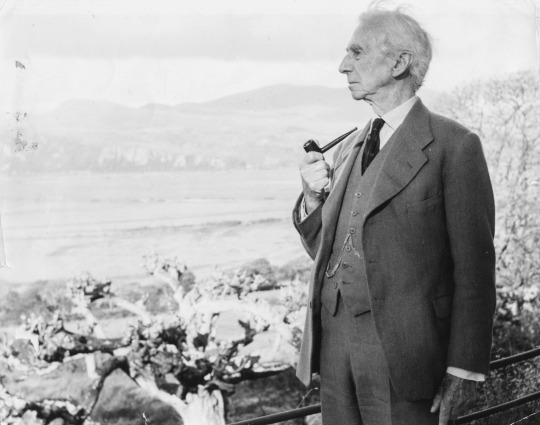
Under the influence of great fear, almost everybody becomes superstitious. The sailors who threw Jonah overboard imagined his presence to be the cause of the storm which threatened to wreck their ship. In a similar spirit the Japanese, at the time of the Tokyo earthquake took to massacring Koreans and Liberals. When the Romans won victories in the Punic wars, the Carthaginians became persuaded that their misfortunes were due to a certain laxity which had crept into the worship of Moloch. Moloch liked having children sacrificed to him, and preferred them aristocratic; but the noble families of Carthage had adopted the practice of surreptitiously substituting plebeian children for their own offspring. This, it was thought, had displeased the god, and at the worst moments even the most aristocratic children were duly consumed in the fire. Strange to say, the Romans were victorious in spite of this democratic reform on the part of their enemies.
Collective fear stimulates herd instinct, and tends to produce ferocity toward those who are not regarded as members of the herd. So it was in the French Revolution, when dread of foreign armies produced the reign of terror. And it is to be feared that the Nazis, as defeat draws nearer, will increase the intensity of their campaign for exterminating Jews. Fear generates impulses of cruelty, and therefore promotes such superstitious beliefs as seem to justify cruelty. Neither a man nor a crowd nor a nation can be trusted to act humanely or to think sanely under the influence of a great fear. And for this reason poltroons are more prone to cruelty than brave men, and are also more prone to superstition. When I say this, I am thinking of men who are brave in all respects, not only in facing death. Many a man will have the courage to die gallantly, but will not have the courage to say, or even to think, that the cause for which he is asked to die is an unworthy one. Obloquy is, to most men, more painful than death; that is one reason why, in times of collective excitement, so few men venture to dissent from the prevailing opinion. No Carthaginian denied Moloch, because to do so would have required more courage than was required to face death in battle.
—Bertrand Russell, An Outline of Intellectual Rubbish, in Unpopular Essays (1943)
[Robert Scott Horton]
169 notes
·
View notes
Text
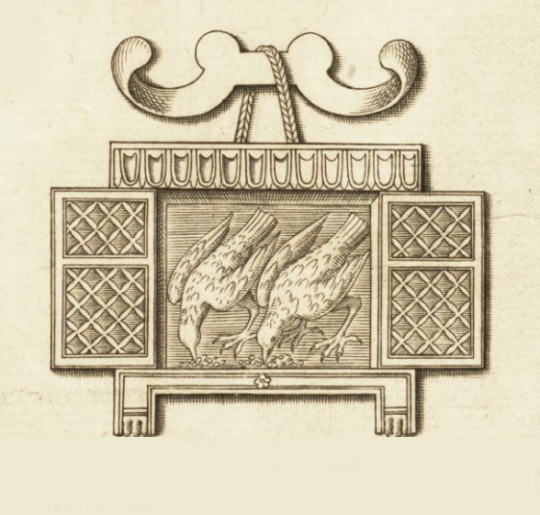
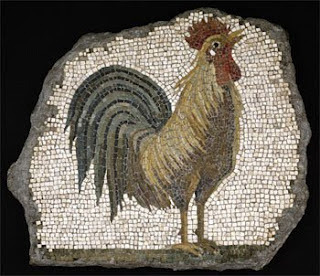
The Sacred Chickens of Ancient Rome
In Ancient Rome the Sacred Chickens were a roost of…sacred chickens that were used for divination by Roman priests. Revered for their ability to give portents of the future, the chickens were attentively raised and kept by the priests, hence why depictions of Roman priests often show them with chickens.
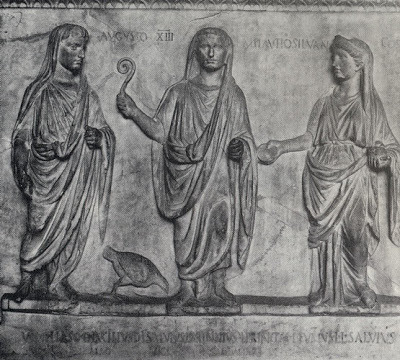
To use the Sacred Chickens for fortunetelling, feed would be spread around the ground and the chickens set loose. If the chickens ate voraciously then a favorable outcome could be expected. If not, then an unfavorable outcome was expected. If a favorable outcome was needed, then the chickens would be kept in cages for a period of time without food before being set loose, which seems to me no different than shaking a magic eight ball repeatedly until you get the right answer. Regardless, the portents of the Sacred Chickens were taken very seriously, and matters of state or military were not conducted until first consulting with the chickens.
In 249 BC during the First Punic War, the Roman Consul Publius Claudius Pulcher was leading a fleet of 120 Roman warships on a surprise attack on the Carthaginian port of Drepana. When feed was spread out on the deck of the ship, the chickens refused to eat, signaling that the attack was doomed to failure. Pulcher, believing the Sacred Chickens to be superstitious nonsense, ordered the chickens cast overboard exclaiming “Bibant, quoniam esse nolunt” (Let them drink if they will not eat) . The morale of the Roman fleet spiraled downward. After all how could one conduct a successful military campaign without good portents from the Sacred Chickens? When the fleet attacked the port, it made a clumsy and slow advance against the harbor, thus losing the element of surprise. The Carthaginian fleet quickly mobilized and attacked the Romans, sinking or capturing 93 Roman ships. Ignore the Sacred Chickens at your own peril!
Of course today we know it is unlikely that the Romans lost the battle because of the Sacred Chickens. Fortunately today in our modern societies we do not take such superstitions seriously. Oh BTW Punxsutawney Phil didn't see his shadow, so spring is around the corner! Better go get my snow tires removed.

104 notes
·
View notes
Photo

Carthaginian Warfare
Carthaginian Warfare has been overshadowed by defeat to Rome in the Punic Wars, but for six centuries before that Carthage was remarkably successful in conquering lucrative territories in North Africa, the Iberian Peninsula, and Sicily. By combining the finest mercenary armies with their own elite forces and huge naval fleet, Carthage was able to dominate the western Mediterranean and protect and expand its vast network of colonies and trading posts from the 9th to 3rd centuries BCE.
Purpose of War
Carthage was founded by the Phoenician city of Tyre in 813 BCE as a handy location along western Mediterranean trade routes, and the colony would go on to prosper and found its own colonies, eventually taking over the old Phoenician network too. Such a large geographical spread of interests required a naval fleet to safeguard both the ships which plied their trade across the seas and the ports which gave them protection and access to lucrative hinterlands. In addition, a land army was sometimes required in order to defend Carthage's trading interests from local tribes and rival powers, especially the tyrants of Sicily and later Rome. Another, equally important role for armies was as an offensive means to expand the empire by taking control of new territories rich in natural resources such as the silver mines of Iberia.
Continue reading...
31 notes
·
View notes
Text

Ancient Warship’s Bronze Battering Ram Sunk During a Battle Between Rome and Carthage Found
Found near the Aegadian Islands, just west of Sicily, the bronze rostrum played a role in the last battle of the First Punic War, which ended in 241 B.C.E.
In 241 B.C.E., two empires faced off in a naval clash off the coast of Sicily. By then, Rome and Carthage had been fighting for more than two decades. Rome’s victory in the skirmish, officially called the Battle of the Aegates, brought an end to the First Punic War, the initial conflict in a series of wars between the two ancient powers.
Now, explorers have recovered a piece of that final battle: the bronze battering ram of an ancient warship. According to a statement from Sicily’s Superintendence of the Sea, the ram was found on the seafloor off the western coast of the Mediterranean island, at a depth of around 260 feet. To retrieve the artifact, the team used deep-water submarines from the Society for Documentation of Submerged Sites (SDSS) and the oceanographic research vessel Hercules.
The seabed off the Aegadian Islands “is always a valuable source of information to add further knowledge about the naval battle between the Roman and Carthaginian fleets,” Regional Councilor for Cultural Heritage Francesco Paolo Scarpinato tells Finestre sull’Arte. He adds that the find is yet another confirmation of the work of the late archaeologist Sebastiano Tusa, who spearheaded exploration of the seabed as the site of the 241 battle after a separate ram, also known as a rostrum, was first found there in the early 2000s. In the two decades since, researchers have recovered at least 25 rams from the seabed.
At the time of the Battle of the Aegates, Rome and Carthage had been at war for 23 years, fighting for dominance in the Mediterranean. As the Greek historian Polybius later wrote, the Romans sank 50 Carthaginian ships and captured another 70 along with their crews, taking nearly 10,000 sailors prisoner during the naval battle. Rome forced Carthage to surrender. But the fragile peace was short-lived: Over the next century, Rome would go on to fight a second and third war against the Punic people, winning each time.
“It was very costly, both in terms of human life and economically,” Francesca Oliveri, an archaeologist at the superintendence, told BBC News’ Alessia Franco and David Robson in 2022. “In the last phase, Rome even had to ask for a loan from the most well-to-do families to arm the fleet and build new boats.”




The recently discovered ram has been brought to Favignana, one of the Aegadian Islands, for further study. Though its features are difficult to make out because the object is covered in marine life, researchers have been able to discern a decoration on its front: a relief depicting a Montefortino-style Roman helmet decorated with three feathers.
The battering ram adds to the wealth of war relics found on the seabed, which also include 30 Roman soldiers’ Montefortino helmets, two swords, coins and many clay amphorae (large storage jars).
According to the SDSS, rams were the most important naval weapons of their time. They were placed on the bows of warships at water level so that sailors could crash their boats into enemy vessels, damaging and sinking them. The plethora of rams scattered on the seabed are testaments to the weapons’ effectiveness in ancient battle.
“We are finding so many things that help to illustrate a little better the world of the third century [B.C.E.],” Oliveri told BBC News in 2022. “It’s the first site of a naval battle, in the world, that has been scientifically documented like this, and it will continue to be documented—because the area of interest is very large. … It will take at least another 20 years to explore it fully.”
By Sonja Anderson.


#Ancient Warship’s Bronze Battering Ram Sunk During a Battle Between Rome and Carthage Found#roman rostrum#bronze#bronze rostrum#bronze battering ram#Battle of the Aegates#First Punic War#ancient artifacts#archeology#archeolgst#history#history news#ancient history#ancient culture#ancient civilizations#roman history#roman empire
28 notes
·
View notes
Text


Roman and Carthaginian ships, 1/1200 scale. Entirely scratch built , mostly from recycled materials!
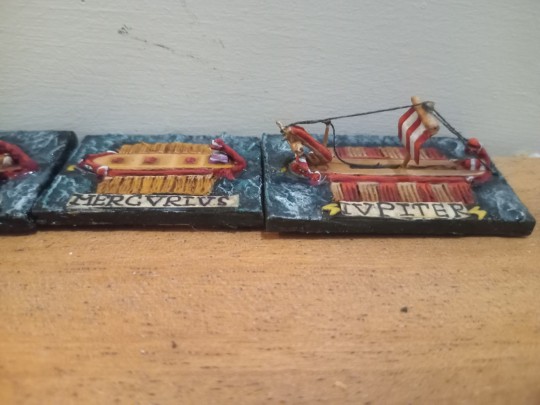
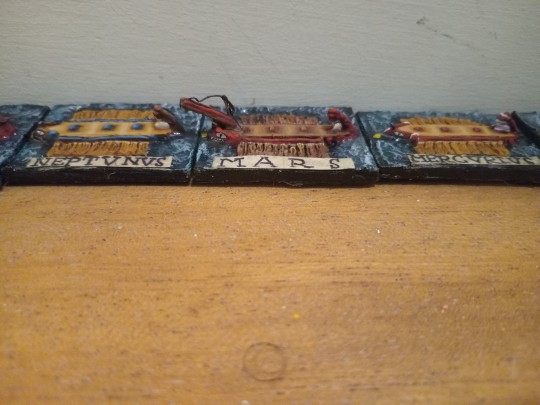



19 notes
·
View notes
Text
no ship wars <- rome putting restrictions on the carthaginian fleet at the end of the second punic war
194 notes
·
View notes
Text
Another Wikipedia featured article poll, but it's hand-curated this time. Links and summaries below the cut.
A History of British Fishes is a natural history book by William Yarrell, serialised in nineteen parts from 1835, and then published bound in two volumes in 1836. It is a handbook or field guide systematically describing every type of fish found in the British Isles, with an article for each species.
The Battle of Lake Trasimene was fought when a Carthaginian force under Hannibal ambushed a Roman army commanded by Gaius Flaminius on 21 June 217 BC, during the Second Punic War. The battle took place on the north shore of Lake Trasimene, to the south of Cortona, and resulted in a heavy defeat for the Romans.
Steller's sea cow (Hydrodamalis gigas) is an extinct sirenian described by Georg Wilhelm Steller in 1741. At that time, it was found only around the Commander Islands in the Bering Sea between Alaska and Russia; its range extended across the North Pacific during the Pleistocene epoch, and likely contracted to such an extreme degree due to the glacial cycle.
The Baker Street robbery was the burglary of safety deposit boxes at the Baker Street branch of Lloyds Bank in London, on the night of 11 September 1971. A gang tunnelled 40 feet (12 m) from a rented shop two doors away to come up through the floor of the vault.
On the morning of 6 December 1917, the French cargo ship SS Mont-Blanc collided with the Norwegian vessel SS Imo in the waters of Halifax, Nova Scotia, Canada. The Mont-Blanc, laden with high explosives, caught fire and exploded, devastating the Richmond district of Halifax.
The nature fakers controversy was an early 20th-century American literary debate highlighting the conflict between science and sentiment in popular nature writing. The debate involved important American literary, environmental and political figures.
The Spaghetti House siege took place between 28 September and 3 October 1975. An attempted robbery of the Spaghetti House restaurant in Knightsbridge, London, went wrong and the police were quickly on the scene.
Weird Tales is an American fantasy and horror fiction pulp magazine founded by J. C. Henneberger and J. M. Lansinger in late 1922. The first issue, dated March 1923, appeared on newsstands February 18.
In July 2017, the municipalities of Mahwah, Upper Saddle River, and Montvale in Bergen County, New Jersey, in the United States, opposed extension of an eruv within their borders. An eruv is a land area surrounded by a boundary of religious significance, often marked by small plastic pipes (called lechis) attached to utility poles.
The Makassar kingdom of Gowa emerged around 1300 CE as one of many agrarian chiefdoms in the Indonesian peninsula of South Sulawesi. From the sixteenth century onward, Gowa and its coastal ally Talloq became the first powers to dominate most of the peninsula, following wide-ranging administrative and military reforms, including the creation of the first bureaucracy in South Sulawesi.
65 notes
·
View notes
Note
Do we know anything about the historical context that allowed Venice to come up with something like the Arsenal? Most accounts kind of treat it as this de Novo idea to mass produce ships, but I feel like history never actually works like that, and Carthaginians were doing that 1,500 years earlier. Were there trends going on elsewhere in Europe and the Mediterranean world that contributed to this industrial breakthrough? Do we know anything about the specific administrators who had to plan this seeming quantum leap in production out? Did a bunch of folks immediately see what the Venetians were doing and copy it? If not, why?
I'm going to take a slightly broader take on this question: the assembly line is not an invention, it's a discovery. So it's not about who did it first, because you have lots of cases of independent discoveries happening in wildly disparate times and places.
I remember quite vividly a talk given by Professor Anthony Barbieri-Low when he first arrived at UCSB, where he argued that the assembly line was first discovered in China...during the Bronze Age. As early as the Shang and Zhou dynasties around 1000 BCE, we have evidence of assembly line techniques being used in the production of bronze and pottery, because the pieces were inscribed on the bottom with indications of which worker did which parts of the process and which quality inspector signed off on the piece as good enough for sale - so that if the thing broke, officials could figure out exactly who to blame for shoddy work.

So it's not that Venice was the first to ever adopt the idea of assembly line manufacture of ships, but rather that they did it more consistently and devoted more resources to it than anyone else, and iteratively improved on the techniques to get production times down to a single day per galley.
The Arsenal of Venice was an enormous complex, roughly 15% of Venice's landmass, surrounded by a two-mile long defensive wall, and employing some 16,000 people. In addition to standardized pre-fabricated parts, the Arsenal also emphasized division of labor with workshops devoted to producing everything a warship might need in-house - rope, rigging, masts, planking, sails, nails, guns, etc. Organizing these supply chains, what we might call vertical integration, was an incredible logistical feat in and of itself.
In terms of technology, the Arsenal pioneered frame-first (as opposed to hull-first) construction, a moving assembly line whereby galleys were floated down a canal to different stages of the production process, new forms of firearms, and new kinds of ships llike the galleass and galleon. Galileo was a major consultant to the Arsenal at the height of its power.
In addition to the technical advancements, all of this required a lot of money - roughly 10% of the Republic's entire budget - and what made Venice truly unique was its ability to devote those kind of resources on a regular basis at a time when even powerful empires like the Ottomans and the Spanish were still using the yo-yoing methods of medieval fleet construction.
#history#economic history#ancient history#renaissance history#arsenal of venice#galley#ships#medieval navy#royal navies#royal fleets#military history#naval warfare
67 notes
·
View notes
Text
WIP Wednesday
Feeling increasingly antsy about the fact that we are four full months into 2023 and I have posted zero fics so far this year, but I am actively writing again these days, I swear! Currently close to 18k words into a Joe/Nicky canon-divergence AU set during the last Punic War (i.e. the Fall of Carthage). I'm probably only around the halfway mark and my gremlin brain craves validation, so have a snippet:
"My apologies; I did not catch your name earlier. Mine is Nicolò—or Nicolaus Genuates, as the Romans would have it."
"Well, I am obviously not Roman, and I would have you as you are, Nicolò," Yusuf replied with a wink. He filed the name away for later consideration; not entirely Roman himself, then, this Nicolò. "My name is Yusuf."
Nicolò leaned in a little closer, smiling with his eyes. "So what land do you call home, then, Yusuf? And what brings you to our city?"
"Carthage, and the great misfortune of my family connections, I'm afraid," Yusuf said dryly. "I'm a merchant by trade, but my sister's husband sits on our judicial tribunal, and wanted to ensure our family's interests were represented in the negotiations with your Senate."
"Ah, the One Hundred and Four, as they are called?" Nicolò's gaze sharpened. "You are part of the Carthaginian envoy."
Yusuf lifted an eyebrow. "Indeed. You are better versed in foreign affairs than most actors I have met."
"Then you haven't met the right actors," Nicolò countered. "But I'm not one myself, though I count them among my friends. I'm a scribe—I work at the aerarium archives."
It caught Yusuf by surprise. "I admit, I would not have guessed that. That you are an educated man, yes, I presumed as much from your speech, but it's hard to envision you spending your days transcribing laws or balancing accounts."
Nicolò gave him a charmingly crooked little grin. "Perhaps you lack imagination, then."
"I have never been accused of that before."
"No? How did you picture me, then? As an actor like my friend Aurelius over there?"
"You would cut a fine figure on a stage," Yusuf allowed, letting his gaze travel down along the curve of Nicolò's neck to his broad shoulders, the lean muscles of his arms. "But if not that, then perhaps…a craftsman, or engineer of some sort. Someone who works with his hands." One of Nicolò's large hands rested atop the table between them. Yusuf traced along the outline of it. "You have very capable-looking hands."
"Capable of holding a pen, yes. Among other things." Nicolò turned his hand palm up, letting his fingers tangle with Yusuf's. "Your hand is not as soft as I would have imagined, for a wealthy Punic merchant."
"Carthaginian," Yusuf corrected. "'Punic' is a Roman word, not one we use to describe ourselves. And do your merchants not travel by ship, and handle the ropes alongside their sailors as needed? Or the sword, when called upon to defend their cargo? All these tasks build their own callouses."
"As they should." Nicolò stroked his thumb across the lines of Yusuf's palm, and somehow that simple touch sent a crackle of heat along the full length of Yusuf's body. He sucked in a breath, and Nicolò lifted his heavy-lidded gaze back up to meet Yusuf's. His lopsided smile now had clear intent behind it. "So what brings a Carthaginian merchant-ambassador here, tonight, instead of toasting his compatriots after a long day's negotiations?"
Yusuf ducked his head in closer, brushing the words against the shell of Nicolò's ear. "I tired of their company, and sought better. Have I found it?"
61 notes
·
View notes
Text
really loved the the sargasso sea bits in that seaweed book
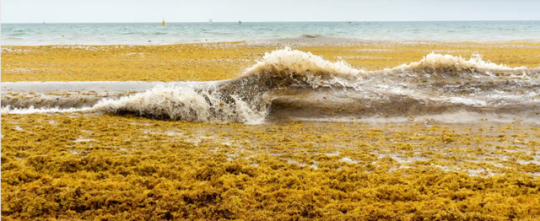
"Earlier in history, sailors had already reported extensive, unmanageable amounts of Sargassum and similar entanglements. In twelfth-century scholarly texts written by Western Europeans, frequent mention was made of the dangerous lever zee, also referred to as the mare coagulatum or ‘curdled sea’. Finding oneself in the curdled sea was one of the greatest fears of seafarers in the Middle Ages. Algae would wrap themselves around the rudder, rendering ships unsteerable and uncontrollably adrift. Most captains avoided the sea even though they did not know its exact location.
The Greek geographer and historian Strabo (c. 63 BC–c. AD 24) quotes Pytheas of Marseilles, who allegedly said:
In the northern area is neither land, nor water, nor air, but a mixture of these, similar to a marine lung in which land and sea and all things are suspended, and this mixture is as if it were a fetter of the whole existing in a form impassable by foot or ship: an immobile sea.
In his fourth-century poem Ora Maritima, Rufius Festus Avienus describes a congealed sea in which the Carthaginian explorer Himilco gets stuck, around 525 BC, on a journey through the Atlantic Ocean. It took Himilco four months to get out again:
No breezes propel a craft, the sluggish liquid of the lazy sea is so at a standstill. He also adds this: A lot of seaweed floats in the water and often after the manner of a thicket holds the prow back. He says that here nonetheless the depth of the water does not extend much and the bottom is barely covered over with a little water. They always meet here and there monsters of the deep and beasts swim amid the slow and sluggishly crawling ships. Mist envelops sky and the surface of the sea like a cloak and the clouds are motionless in the thick sky."
sluggish sea and thick sky!! they make it sound like an entire landscape submerged in jelly. enchanting.
7 notes
·
View notes
Text
“Now, the Carthaginians were a highly civilised and even refined people, whose religion largely consisted of burning alive a large number of children as a sacrifice to Moloch. . . . Moloch is not fallen; Moloch is in his high place, and his furnaces consume mankind; his armies overrun the earth, and his ships threaten our own island. The question on the lips of any living man is not whether some who burn their children may nevertheless love their children, it is whether those who burn their children shall conquer those who don't. The parallel is practically quite justifiable; what we are fighting has all the regularity of a horrible religion. We are not at war with regrettable incidents or sad exceptions, but with a system like the system of sacrificing babies; a system of drowning neutrals, a system of enslaving civilians, a system of attacking hospital services, a system of exterminating chivalry.”
— G.K. Chesterton, in The History of the Family
37 notes
·
View notes
Note
Do you know anything about the fixed star Dubhe?
I know a little about the Ursa Major, Dubhe's constellation of the great bear. It's a funny thing that it has a tail. Real bears don't. But greco-roman mythology explains that by saying it was Jupiter/Zeus by picking her up and streching her, that gave her a tail. It has a very important relationship with the constellations around it, especially Ursa Minor and Bootes, which I've talked about before, and you can't understand one without the other.
Dhube is the alpha of the Great Bear, known as a circumpolar constellation in the northern hemisphere. It's really high on the northern celestial pole, making a lot of its stars never set on the horizon, and so here in Brazil for example we never see the bears entirely. I've never seen them. The proximity to the northern axis makes the Great Bear always look as if she's going in circles around Polaris, the star that's placed in the exact spot of the northern axis and never moves while everything revolves around it, making it look like we're all in a centrifuge.




"Now where heaven reaches its culmination in the shining Bears, which from the zenith of the sky look down on all the stars and know no setting and, shifting their opposed stations about the same high point, set sky and stars in rotation, from there an insubstantial axis runs down through the wintry air and controls the universe, keeping it pivoted at opposite poles: it forms the middle about which the starry sphere revolves and wheels its heavenly flight, but is itself without motion and, drawn straight through the empty spaces of the great sky to the two Bears and through the very globe of the Earth, stands fixed. Yet the axis is not solid with the hardness of matter, nor does it possess massive weight such as to bear the burden of the lofty firmament; but since the entire atmosphere ever revolves in a circle, and every part of the whole rotates to the place from which it once began, that which is in the middle, about which all moves, so insubstantial that it cannot turn round upon itself or even submit to motion or spin in circular fashion, this men have called the axis, since, motionless itself, it yet sees everything spinning about it." (Manilius, Astronomica. 1st century AD. Book I p. 27)
Manilius saw a different sky than this in the 1st century, Polaris wasn't as close to the pole as it is today, but the Bears still had this movement. The Great Bear was also called by astrologers as Bootes' carriages. It's hard to understand its thing if you see them just as bears, but the idea is that Bootes (aka the bearward or Icarius) is driving them like a team of plowing oxen, because Icarius is a shepherd who keeps the rotation of the heavens. So, the bears have to do with plowing, planting, agriculture, cars, carriages and driving or carrying etc.
The top of the axis is occupied by constellations well known to hapless mariners, guiding them over the measureless deep in their search for gain. Helice, the greater, describes the greater arc; it is marked by seven stars which vie with each other under its guidance the ships of Greece set sail to cross the seas. Cynosura [Ursa Minor] is small and wheels round in a narrow circle, less in brightness as it is in size, but in the judgment of the Tyrians it excels the larger bear. Carthaginians count it the surer-guide when at sea they make for unseen shores. They are not set face to face: each with its muzzle points at the other’s tail and follows one that follows it. Sprawling between them and embracing each the Dragon separates and surrounds them with its glowing stars lest they ever meet or leave their stations.” (Manilius, Astronomica. 1st century AD. Book 1 p.27, 29).
Ptolemy says the constellation is like Mars in its effects, which makes sense with plowing. But looking at my post about Bootes will help you see a bigger picture and get the movie reference I made here. On there I left out the fact that Cooper is also a pilot besides a farmer, later I realized that the spacecraft could also be seen as the bears in the story, as well as his agricultural machinery that starts showing anomalies in the beginning of the film. Movies are the best help in understanding astrological symbolism, it's amazing. And when you see it you can't unsee it.
2 notes
·
View notes
Note
So, I'm in this fandom based from a series of books, and it got adapted to 5 movies and 2 tv series.
The thing is, the books/movies and the first tv series has a different timeline and a different "endgame" ship. In the books, the titular character ends up with a female FBI agent who met him after his arrest. In the series, he ends up with the male FBI agent who uncovered his crimes.
And the book fandom could be such an asshole about it sometimes, derailing the m/m ship posts with their m/f ship, saying that it's more toxic than their ship and rubbing their ship's canonicity in everyone's faces.
Well, the main character literally tried to brainwash the female love interest into being a duplicate of his deceased sister. And other than that, he's a serial killer whose appetite rhymes with the name of a certain Carthaginian general, so why would the fans judge the validity of a ship based on the "toxicity level"? I don't think any ships with a manipulative serial killer would be healthy tbh 😭
.
10 notes
·
View notes
Text
And barbarians were inventors not only of philosophy, but almost of every art. The Egyptians were the first to introduce astrology among men. Similarly also the Chaldeans. The Egyptians first showed how to burn lamps, and divided the year into twelve months, prohibited intercourse with women in the temples, and enacted that no one should enter the temples from a woman without bathing. Again, they were the inventors of geometry. There are some who say that the Carians invented prognostication by the stars. The Phrygians were the first who attended to the flight of birds. And the Tuscans, neighbours of Italy, were adepts at the art of the Haruspex. The Isaurians and the Arabians invented augury, as the Telmesians divination by dreams. The Etruscans invented the trumpet, and the Phrygians the flute. For Olympus and Marsyas were Phrygians. And Cadmus, the inventor of letters among the Greeks, as Euphorus says, was a Phoenician; whence also Herodotus writes that they were called Phoenician letters. And they say that the Phoenicians and the Syrians first invented letters; and that Apis, an aboriginal inhabitant of Egypt, invented the healing art before Io came into Egypt. But afterwards they say that Asclepius improved the art. Atlas the Libyan was the first who built a ship and navigated the sea. Kelmis and Damnaneus, Idaean Dactyli, first discovered iron in Cyprus. Another Idaean discovered the tempering of brass; according to Hesiod, a Scythian. The Thracians first invented what is called a scimitar (arph), -- it is a curved sword, -- and were the first to use shields on horseback. Similarly also the Illyrians invented the shield (pelth). Besides, they say that the Tuscans invented the art of moulding clay; and that Itanus (he was a Samnite) first fashioned the oblong shield (qureos). Cadmus the Phoenician invented stonecutting, and discovered the gold mines on the Pangaean mountain. Further, another nation, the Cappadocians, first invented the instrument called the nabla, and the Assyrians in the same way the dichord. The Carthaginians were the first that constructed a triterme; and it was built by Bosporus, an aboriginal. Medea, the daughter of Æetas, a Colchian, first invented the dyeing of hair. Besides, the Noropes (they are a Paeonian race, and are now called the Norici) worked copper, and were the first that purified iron. Amycus the king of the Bebryci was the first inventor of boxing-gloves. In music, Olympus the Mysian practised the Lydian harmony; and the people called Troglodytes invented the sambuca, a musical instrument. It is said that the crooked pipe was invented by Satyrus the Phrygian; likewise also diatonic harmony by Hyagnis, a Phrygian too; and notes by Olympus, a Phrygian; as also the Phrygian harmony, and the half-Phrygian and the half-Lydian, by Marsyas, who belonged to the same region as those mentioned above. And the Doric was invented by Thamyris the Thracian. We have heard that the Persians were the first who fashioned the chariot, and bed, and footstool; and the Sidonians the first to construct a trireme. The Sicilians, close to Italy, were the first inventors of the phorminx, which is not much inferior to the lyre. And they invented castanets. In the time of Semiramis queen of the Assyrians, they relate that linen garments were invented. And Hellanicus says that Atossa queen of the Persians was the first who composed a letter. These things are reported by Seame of Mitylene, Theophrastus of Ephesus, Cydippus of Mantinea also Antiphanes, Aristodemus, and Aristotle and besides these, Philostephanus, and also Strato the Peripatetic, in his books Concerning Inventions. I have added a few details from them, in order to confirm the inventive and practically useful genius of the barbarians, by whom the Greeks profited in their studies. And if any one objects to the barbarous language, Anacharsis says, "All the Greeks speak Scythian to me."
Clement of Alexandria
21 notes
·
View notes
Text
Carthaginian sunken ship. Lahaina, Maui. June 2023
3 notes
·
View notes